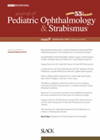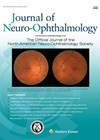You searched for "pandemic"
Ophthalmology Scholarship Applications Open – Deadline 1 June 2021
25 January 2021
The University of Edinburgh has opened applications for The David and Molly Pyott Foundation Scholarships in Ophthalmology which will support eligible ophthalmology trainees / registrars /residents undertake the university’s online, two-year, part-time ChM (Master of Surgery) in Clinical Ophthalmology from September 2021.
Unilateral central scotoma following dengue fever
12 October 2023
| Prabakaran Selvaraj, Shery Thomas, Isabel Ash, Arun Lakshmanan
|
EYE - Neuro-ophthalmology
Case report A 16-year-old Caucasian male was referred to the eye casualty at Nottingham University Hospitals NHS Trust by the infectious diseases unit in September 2013. He gave a history of photophobia, pain on eye movements and central blurred vision...
MPH treatment effect in ADHD on choroidal vascular index
In this study the authors aimed to investigate the choroidal vascular index (CVI) in treatment-free children with ADHD, children regularly taking methylphenidate (MPH) and healthy controls. This was a prospective cross-sectional study of 52 patients with newly diagnosed ADHD, 46...Deadline approaching for Edinburgh scholarship applications
19 June 2019
The University of Edinburgh has opened applications for scholarships to its two online courses, the MSc in Primary Care Ophthalmology and the ChM in Clinical Ophthalmology.
100 years of insulin
3 October 2022
| Aaron Carlisle, Kieran Walshe, Lloyd Paul Aiello (Prof), Tunde Peto, Katie Curran
|
EYE - General
*Joint first authors The centenary of the discovery of insulin is a time to celebrate one of the most significant scientific discoveries of the 20th century. Background Before 1923, Type 1 diabetes mellitus [T1DM] resulted in death from severe ketoacidosis...
Streamlining cataract lists: how are you managing it?
Mr Jonathan Ross, in conversation with Ms Bita Manzouri, provides a personal perspective on challenges and opportunities shaping the future of cataract surgery services across the hospital eye service. Redesigning cataract pathways in response to COVID-19 Bita Manzouri: Over the...New genomic test saves Moorfields patient’s sight
Moorfields patient Ellie Irwin’s stubborn and debilitating eye inflammation was successfully treated as a result of a new metagenomic service identifying the cause of this as a rare infection. In 2019, Ellie first got symptoms of uveitis, a condition characterised...Ocular Dirofilariasis: a diagnosis on the rise?
Dirofilaria repens is one of 40 species of Dirofilaria. It is a zoonotic filarial nematode that commonly impacts dogs, however, human infection can occur through affected organs like skin, lung and eyes [1]. Although, there have been case reports of...Prognosis prediction using clinical findings for fourth nerve palsies
3 February 2023
| Lauren R Hepworth
|
EYE - Neuro-ophthalmology
The authors present a retrospective review of a cohort of patients diagnosed with fourth cranial nerve palsy with more than six months follow-up, over a 10-year period at a single centre. Thirty-five patients were included in the study, and spilt...
The role of virtual Rb-NET Multidisciplinary Team meetings in the management of children with retinoblastoma in low- and middle-income countries
6 April 2021
| Ido Didi Fabian, Nick Astbury, Elizabeth Dennis Nkanga, Anne Ampaire Musika, Susanna Ajayi, Marcia Zondervan
|
EYE - Pathology, EYE - Oncology, EYE - Orbit, EYE - General
A selection of participants in an MDT meeting with Uganda. In 2017 the LINKS Programme developed a new network of LINKS to support and coordinate action against retinoblastoma (Rb) in response to requests from low- and middle-income countries (LMICs), called...
Novel changes during COVID-19 – transforming a walk-in Eye Casualty to a telephone triage service
18 February 2021
| Karishma Parmar, Riddhi Thaker, Deepa Rathore
|
EYE - General
With the current pandemic climate due to COVID-19, out of the norm approaches have been adopted in different hospitals across the UK to ensure patient safety. At our Eye Casualty (EC) department at Northampton General Hospital (NGH), we felt the...





